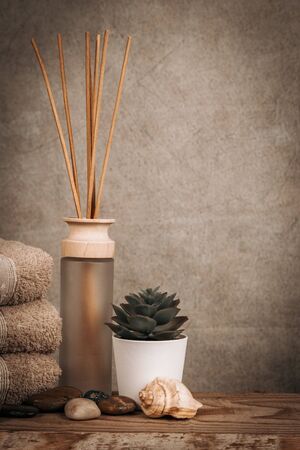Understanding Eco-Friendly Minimalism in a British Context
Eco-friendly minimalism, at its core, is about intentionally reducing consumption and waste while creating calming, functional spaces that tread lightly on the planet. In the UK, this philosophy resonates with a growing movement towards sustainability and mindful living, shaped by unique local challenges and cultural sensibilities. From centuries-old terraced houses to modern flats, British homes reflect a blend of heritage and innovation that lends itself well to minimalist adaptation. Embracing eco-friendly minimalism here means prioritising natural materials, upcycling where possible, and making thoughtful choices that consider both environmental impact and the character of one’s home. The UKs commitment to reducing carbon emissions and managing resources responsibly is mirrored in the way homeowners are now integrating energy-efficient fixtures, improving insulation against damp weather, and choosing furnishings that are built to last rather than following fast furniture trends. Moreover, there’s a distinctly British appreciation for comfort and cosiness—often referred to as “hygge” or “cosy”—which can be woven into minimalist design through careful layering of textures and the use of soothing, natural colours. By aligning with these principles, UK residents can transform their homes into sanctuaries that not only reflect personal values but also contribute positively to broader environmental goals.
2. Practical Decluttering: British Approaches and Community Resources
Transforming your home into an eco-friendly minimalist sanctuary starts with thoughtful decluttering, and the UK offers a wealth of local resources and traditions to support this process. Here’s a step-by-step guide tailored for British households, ensuring your efforts are both sustainable and community-minded.
Step 1: Assess and Categorise Your Belongings
Begin by evaluating each room, sorting items into categories: Keep, Donate/Sell, Recycle, and Dispose. This methodical approach is popular in many British homes, as it reduces overwhelm and encourages careful consideration of what truly adds value to your life.
Sample Categorisation Table
| Category | Action | UK Resource Example |
|---|---|---|
| Keep | Organise and store neatly | N/A |
| Donate/Sell | Pass on usable items | British Heart Foundation, Oxfam shops, local boot sales |
| Recycle | Sort by material type | Council recycling centres, Terracycle schemes |
| Dispose | Responsible disposal for non-recyclables | Council waste collections (check local guidelines) |
Step 2: Use Local Charity Shops and Donation Points
The UK’s high streets are dotted with charity shops supporting causes from cancer research to animal welfare. These shops offer a sustainable way to pass on books, clothing, homeware, and even small electronics. Check with your local council or community noticeboard for pop-up donation events or textile banks in your area.
Step 3: Take Advantage of Recycling Schemes
Councils across the UK provide household recycling collections for paper, plastics, glass, metals, and sometimes textiles or electronics. For harder-to-recycle items like batteries or light bulbs, look out for drop-off points at supermarkets or recycling centres. Platforms such as Recycle Now help you locate your nearest facilities quickly.
Step 4: Explore Neighbourhood Sharing Initiatives
The rise of sharing schemes is transforming how Britons manage surplus belongings. Consider these community-driven options:
| Scheme Type | Description & UK Example |
|---|---|
| Library of Things | Borrows tools, kitchen gadgets and more; e.g., London Library of Things. |
| Freegle/Freecycle Groups | Offer unwanted items locally via online platforms. |
| Lending Libraries & Toy Libraries | Reduce clutter by borrowing rather than buying infrequently-used goods. |
Tried-and-True British Advice:
If you haven’t used something in over a year—or if it no longer “sparks joy”—it may be time to let it go. Many UK households find it helpful to set a regular date (for example, at the start of each season) to review possessions and keep their homes streamlined.

3. Sustainable Design Choices for UK Homes
When embarking on the journey to create an eco-friendly minimalist sanctuary in the UK, making mindful design choices is crucial. Sourcing sustainable materials should be a top priority—look for FSC-certified timber, reclaimed wood, or recycled materials that have minimal environmental impact. For walls and floors, consider British-made eco paints and natural stone or bamboo flooring, which not only reduce your carbon footprint but also suit the damp UK climate by offering durability and moisture resistance.
Energy efficiency is another cornerstone of sustainable living. Invest in high-quality insulation tailored for British weather—think double- or triple-glazed windows and draught-proofing solutions to keep your home cosy in winter and cool in summer. When selecting appliances, opt for those with an A+++ energy rating, such as heat pump tumble dryers or induction hobs, which consume less electricity and lower your bills. Don’t overlook LED lighting and smart thermostats, both of which help manage energy use effectively throughout the year.
Furnishing your space with sustainability in mind doesn’t mean compromising on style or comfort. Choose furniture crafted from responsibly sourced materials, ideally by local artisans or reputable British brands committed to ethical production. Minimalism thrives on quality over quantity: invest in a few timeless pieces instead of crowding your space with mass-produced items. Soft furnishings made from organic cotton or British wool not only support local industries but are well-suited to the UK’s varying temperatures, providing natural warmth and breathability. By integrating these considered elements, you ensure your home remains both beautifully minimalist and truly sustainable.
4. Maximising Natural Light and Insulation
Creating an eco-friendly minimalist home in the UK means making the most of natural resources while minimising energy use. One of the most effective ways to achieve this is by maximising natural light and upgrading your insulation to suit the often unpredictable British weather. Here are some practical tips tailored for UK homes:
Improving Natural Lighting
Natural light not only reduces your need for artificial lighting but also enhances mood and wellbeing. In the UK, where grey skies can be frequent, optimising daylight is key.
- Use lighter colours: Paint walls and ceilings in pale shades to reflect more light around your rooms.
- Position mirrors strategically: Place mirrors opposite windows to bounce light deeper into your living spaces.
- Opt for sheer window dressings: Swap heavy curtains for sheer or lightweight blinds to let in more daylight while maintaining privacy.
- Declutter window sills: Keep window areas clear of ornaments or bulky plants that block sunlight.
Draught-Proofing Tips
Draughts are a common culprit of heat loss in many UK homes, especially older properties. Simple draught-proofing measures can significantly improve comfort and energy efficiency.
| Area | Common Issue | Draught-Proofing Solution |
|---|---|---|
| Windows | Gaps around frames | Apply self-adhesive foam strips or silicone sealant |
| Doors | Gaps at base or edges | Install brush strips or draught excluders |
| Letterboxes & Keyholes | Unsealed openings | Add covers or brushes designed for letterboxes and keyholes |
| Floorboards & Skirting | Cracks and gaps | Use filler or flexible sealant suitable for wood floors |
Upgrading Insulation for UK Weather
A well-insulated home remains comfortable year-round and reduces heating bills—a crucial factor given the UKs fluctuating climate.
- Loft insulation: Top up existing insulation to at least 270mm using sustainable materials like sheep’s wool or recycled fibres.
- Cavity wall insulation: If your home was built after the 1920s, check if cavity walls are insulated; retrofitting can make a significant difference.
- Draughty floors: Consider insulating beneath suspended timber floors with natural fibre insulation rolls.
- Pipes and tanks: Insulate hot water pipes and tanks to reduce heat loss and prevent freezing during cold snaps.
The Benefits of Enhancing Natural Light and Insulation
- Lower energy bills: Reduced reliance on heating and lighting saves money long-term.
- Sustainable comfort: A naturally brighter, warmer home aligns with eco-minimalist values.
- Adds property value: Energy-efficient upgrades are attractive features for future buyers.
Takeaway:
Pursuing these improvements transforms your home into a sanctuary that’s both eco-friendly and resilient against the unique challenges of British weather, supporting a minimalist lifestyle with maximum comfort.
5. Water and Energy Conservation: Everyday British Solutions
Adopting water and energy conservation practices is essential for creating an eco-friendly minimalist sanctuary, especially within the context of British homes. The UK’s existing infrastructure offers a variety of practical solutions that seamlessly integrate with daily life, promoting sustainability without sacrificing comfort or convenience.
Smart Meters: Real-Time Awareness
One of the most effective ways to manage energy use in the UK is through the installation of smart meters. These devices are widely available and supported by most energy suppliers. By providing real-time feedback on electricity and gas consumption, smart meters empower homeowners to identify wastage and adjust habits accordingly. For instance, monitoring peak usage times enables you to shift activities such as laundry or dishwashing to off-peak hours, reducing both costs and carbon footprint.
Rainwater Harvesting: A Practical Approach
Rainwater harvesting systems are gaining traction across British households, particularly in areas prone to hosepipe bans or where water metering is standard. Installing a simple water butt connected to your guttering can collect rainwater for garden irrigation, car washing, or even flushing toilets (with more advanced setups). This reduces reliance on treated mains water and helps preserve a precious resource, all while lowering utility bills. Even in small urban gardens, compact barrels make this approach feasible.
Energy Tariffs: Choose Wisely
The UK energy market offers a range of tariffs designed to reward lower consumption or usage during off-peak periods. Green tariffs—sourced from renewable energy—are becoming increasingly competitive, allowing you to support clean power generation. Time-of-use tariffs further incentivise shifting energy-intensive tasks to periods when demand is lower and electricity is greener. Carefully reviewing your current plan and exploring alternatives via comparison websites can lead to significant savings and a reduced environmental impact.
Everyday Habits That Matter
Beyond technological solutions, everyday actions such as fixing leaky taps, using draught excluders, fitting LED bulbs, or opting for low-flow showerheads are simple yet effective. Layering up rather than turning up the heating, boiling only the amount of water needed for your cuppa, and air-drying clothes whenever possible are all classic British habits that align perfectly with eco-minimalist values.
Final Thoughts
Conserving water and energy in a UK home isn’t about grand gestures but consistent, thoughtful choices that suit local conditions and infrastructure. By combining smart technology with traditional wisdom, you’ll make your home more sustainable—and save money—while contributing positively to the environment.
Wildlife-Friendly Outdoor Spaces
Making Room for Nature in Everyday Life
Transforming your home into an eco-friendly minimalist sanctuary doesn’t stop at your front door. In the UK, even a small garden, balcony, or window box can become a haven for local wildlife with some thoughtful choices. Supporting biodiversity not only enriches your space but also strengthens the fragile ecosystems that surround our urban and suburban environments.
Easy-to-Adopt Ideas for British Homes
1. Native Plants for Pollinators
Choose native British plants such as lavender, foxglove, or wild marjoram. These are low-maintenance and provide nectar for bees and butterflies throughout the season. Even in a window box, a mix of these flowers can make a real difference.
2. Miniature Water Features
A shallow dish of water on your balcony or a small pond in the garden can attract birds, frogs, and beneficial insects. Just ensure there’s a way out for small creatures to prevent accidents, and refresh the water regularly to keep it clean.
3. Bird Feeders and Nesting Boxes
Install a simple bird feeder made from recycled materials or purchase one from a local garden centre. Pair it with a nesting box suitable for common British birds like robins or blue tits. Position these away from predators and busy areas for best results.
4. Bug Hotels and Log Piles
Create a bug hotel using old bricks, bamboo canes, and bits of wood stacked together in a quiet corner. This provides shelter for ladybirds, solitary bees, and other helpful insects vital to your garden’s ecosystem.
5. Avoid Chemicals
Ditch pesticides and herbicides in favour of natural alternatives like companion planting or manual weeding. This protects local wildlife and encourages a balanced environment where pests are kept in check naturally.
Celebrating Small Contributions
No matter how compact your outdoor space, each effort contributes to greater ecological health across the UK. By integrating these wildlife-friendly ideas into your minimalist sanctuary, you’re not just reducing environmental impact—you’re actively nurturing nature in your daily life.


